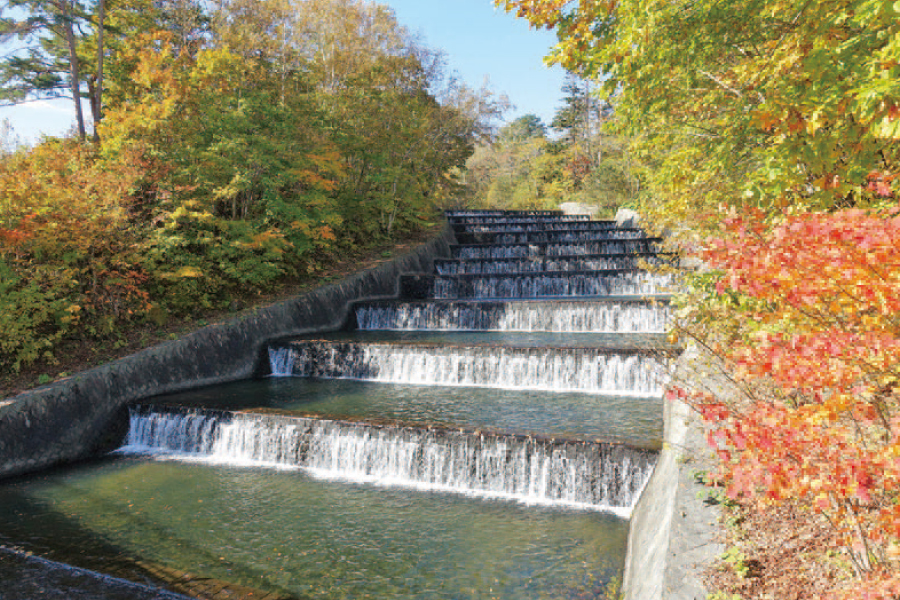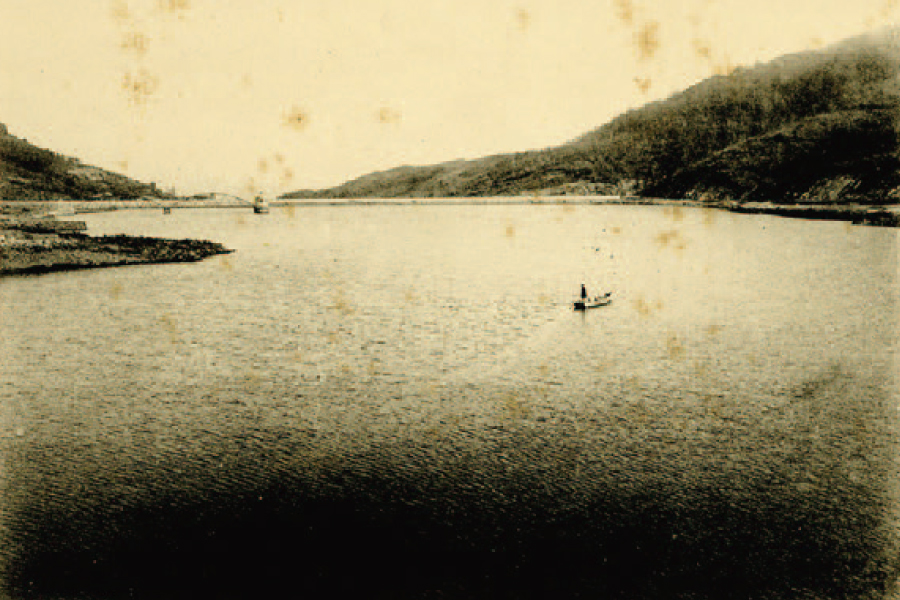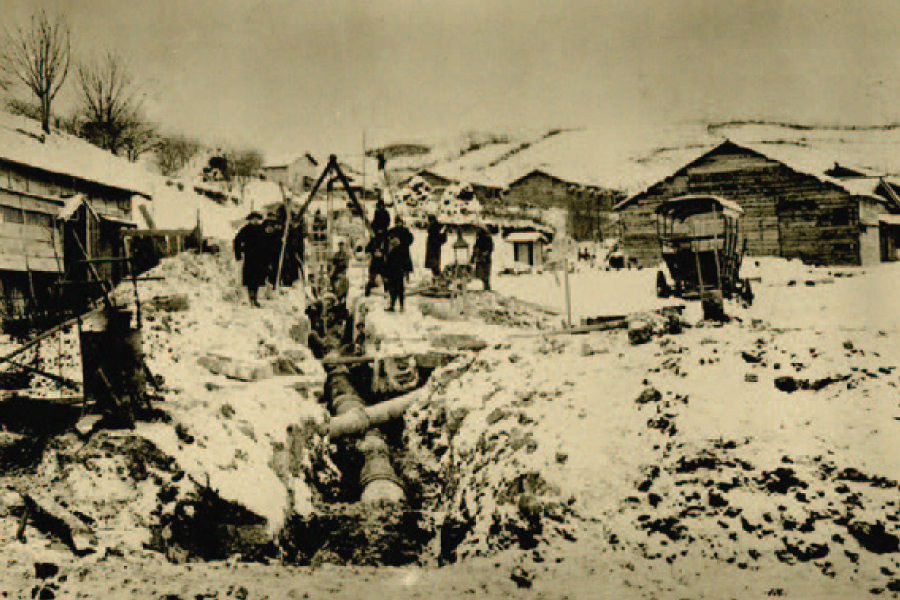
Stepped spillway

Panorama of the Reservoir

Steps at the Overflow Channel Outlet and Spillway

Iron Pipe Installation
Improving the water supply of Otaru became critical as the city developed rapidly in the late nineteenth century. Otaru grew from a fishing village of around 2,000 people to a booming port city of some 90,000 by the late nineteenth century. The number of ships visiting the port also increased the demand for fresh water. In 1907, construction began on the Okusawa Waterworks, consisting of the Okusawa Dam, Okusawa Water Filtration Plant, and a stepped spillway on the Katsunai River in southeastern Otaru.
The waterworks is not open for tours, but visitors can stand on a bridge near the dam to watch overflow water cascade down the wide, stone steps of the spillway. Each step is shaped like a shallow basin to control the force and turbidity of the water. Long and short stones are laid alternately along the edge of each step to slow and direct the water, creating a draping effect. The stone steps and walls of the spillway were all laid by hand.
The city commissioned civil engineer and scholar Nakajima Eiji (1858–1925) to direct the construction of the dam and water purification plant. Nakajima studied sanitary engineering and water supply construction in the United States and Europe before working on water supply systems for the Imperial Palace in Tokyo. Most of the construction on the dam and spillway was done by hand and, because of the cold climate and heavy snow, it took almost seven years to complete.